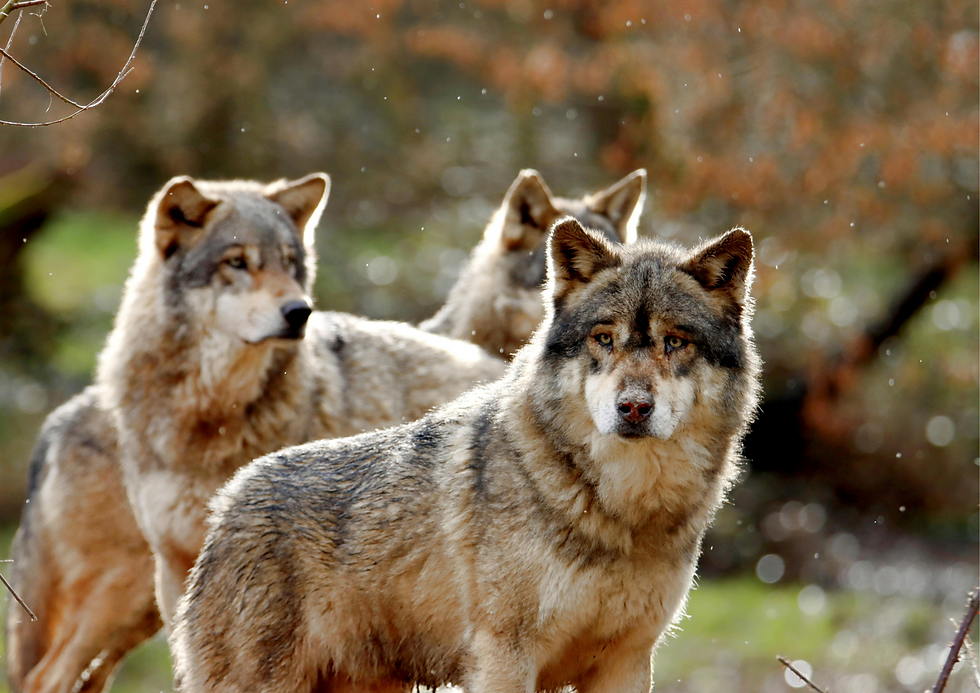Live sustainably, protect habitats
- Dec 16, 2014
- 3 min read
Updated: Jan 12, 2024
I was stunned recently to hear the following statistic: In order to survive, the United States will need 5.3 planet Earths if we continue using up natural resources at the rate we are now. In the UK, that number is 3.5 Earths, according to the World Wildlife Fund.
“Unless we change our lifestyle into a One Planet lifestyle, then we’re going to be in trouble,” says Richard Pope, who serves on the Expert Panel for environmental charity Bioregional‘s One Planet Living initiative and has 25 years’ experience in residential master plans, as well as 10 years’ experience in sustainable/green building. “Sooner or later, we’re going to run out of resources if we keep using them at the rate we are now.”
If any of you have taken my sister Kathleen’s animal Reiki classes at BrightHaven Healing Arts Center for Animals, you may have actually had the opportunity to meet Richard—he’s also the co-founder, with his wife, Gail, of the holistic hospice/sanctuary for animals in Sebastopol, California.
Bioregional is hoping to make sustainable living easy, attainable and attractive for everyone. They’re already starting: A 200-acre site in Rohnert Park, California, with 1,800 residential units and commercial space (including a business incubator for social and sustainable startups) is already underway. Richard is the development director for the site, called Sonoma Mountain Village. It’s also North America’s first fully certified One Planet Living Community—and has a waiting list 2,000 people long.
But what does One Planet Living actually mean? According to Bioregional, it means to live sustainably according to the following 10 guiding principles (born from a collaboration with WWF): zero carbon, zero waste, sustainable transport, local and sustainable materials and food, sustainable water, culture and heritage, equity and fair trade, health and happiness, and natural habitats and wildlife.
Protecting wildlife
The issue of natural habitats and wildlife is particularly close to Kathleen’s heart and her work with Animal Reiki Source. And thankfully, Bioregional works hard to protect biodiversity. Under the guiding principles, if you harm a habitat by building a community, you have to regenerate that habitat and integrate it into the new environment. “It’s not just go in there and bulldoze the land,” says Richard.

The ideal of One Planet Living sounds wonderful, but is it possible? “The inspiring thing is, once people have the opportunity to do it, they do it,” says Richard, adding that these communities are replicable. “If you say to someone, ‘You’ll have cheaper utility bills, your friends will love it, it’s within walking distance of your work and schools and restaurants, recreation, and you can save the world at the same time.’ Why wouldn’t you buy there?” These communities show it truly is possible to live in such a way that we only require one planet.
Businesses and communities can take a step in the right direction by following the 10 principles and getting certified by Bioregional. For individuals like the rest of us, a good start is to calculate your environmental footprint (Bioregional provides this handy calculator) and make changes accordingly—for instance, eat local, recycle, protect animals, walk or bike if possible, and cease the use of heavy insecticides. And if you’re a jet-setter, you can buy carbon offsets so that flight to London is slightly less damaging to the environment.
“There’s a change coming,” says Richard. “There’s going to be a great squeeze upwards in the next generation who demand to live in a lifestyle that doesn’t hurt the planet.” Just don’t expect the greening of America—and the world—to happen overnight. “I guess we’re the trailblazers,” he adds. “If we do this and show it’s successful, then everyone will start doing it.” One can only hope.
{P.S. 10 sustainable (and beautifully designed!) homes via Gizmag.}




Comments